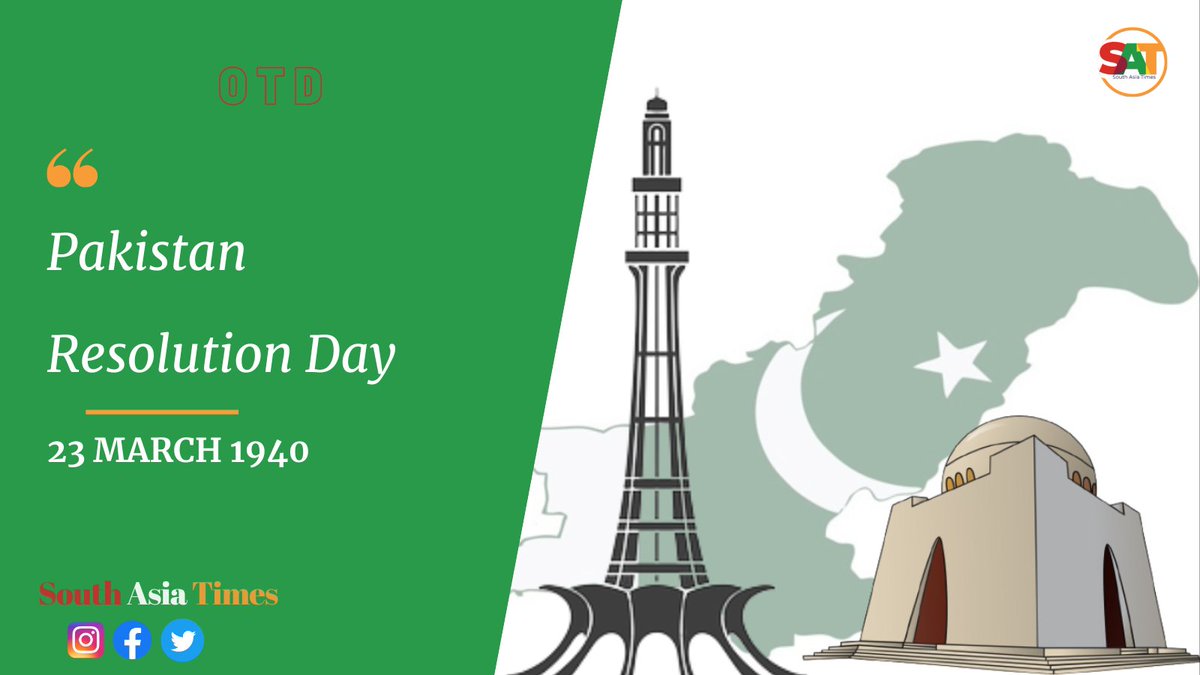#SAT OTD
The Lahore Resolution: A 🧵
#OTD in 1940, the All-India Muslim League adopted the Lahore Resolution—which later came to be known as the Pakistan Resolution—during its three-day general session, which was held in #Lahore from March 22–24.
1/10
The Lahore Resolution: A 🧵
#OTD in 1940, the All-India Muslim League adopted the Lahore Resolution—which later came to be known as the Pakistan Resolution—during its three-day general session, which was held in #Lahore from March 22–24.
1/10

A. K. Fazlul Huq, the Prime Minister of #Bengal, presented the resolution, which was authored and compiled by Muhammad Zafarullah Khan and served as a formal statement of the party's vision for the future of Muslim #India.
2/10

2/10


The document famously stated that "...the areas in which the Muslims are numerically in a majority as in the North Western and Eastern Zones of India should be grouped to constitute ‘independent states’ in which the constituent units should be autonomous and sovereign."
3/10
3/10

Additionally, it argued that the federation scheme represented in the Government of India Act, 1935, was entirely unsuitable & impractical for the unique circumstances of the country and was wholly unacceptable to Muslim India.
4/10

4/10


Therefore, it was claimed that unless a constitutional plan was drawn up in accordance with their stated vision, neither it would work nor would #Muslims find it acceptable.
It was also noted that minorities in these units and regions should have adequate…
5/10
It was also noted that minorities in these units and regions should have adequate…
5/10

…and mandatory safeguards in the constitution for the protection of their religious, cultural, economic, political, administrative, and other rights and interests; & in other regions of India where the Muslims were a minority, similar safeguards shall be provided.
6/10
6/10

The session also authorized the Working Committee to develop a draft constitution as per these tenets, with provisions for the final assumption of all powers by the respective regions for defense, foreign policy, communications, customs, and other relevant fields.
7/10
7/10

Although Choudhary Rehmat Ali initially used the term Pakistan without the letter "i" in his 1933 pamphlet "Now or Never: Are We to Live or Perish Forever?" it wasn't until after the resolution that it became popular.
8/10

8/10


It has been debated whether the resolution called for the creation of two sovereign states in British India's eastern and western regions. While overlooking the phrase "geographically contiguous units," opposing viewpoints have taken "independent states" to mean provinces.
9/10
9/10

The demand for a separate state with a Muslim majority, however, was unambiguous. The envisioned state eventually took on the name "Pakistan," which emerged seven years later at the onset of the Partition of British India in 1947.
10/10 End.

10/10 End.


• • •
Missing some Tweet in this thread? You can try to
force a refresh





















